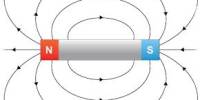The Human brain put images together because it has learned to expect things; sometimes the data might get a little confused. We may see an illusion because we know what we are expected to see, even though part of a picture or design may not be completely there. The basis of this is in how we perceive things. That almost explains everything right there. If our brain and eyes did not function like they do, we would not see illusions like we do. One example of optical illusion is the television. The television just shows us a continuous flow of still pictures, one right after the other. Your eyes, along with your brain, fill in all of the empty spots.
Why Does Our Mind See Illusions?
















